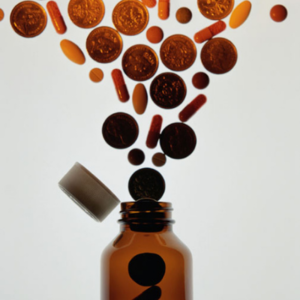Non-Hodgkin lymphoma (NHL) is a significant global health concern, with diffuse large B-cell lymphoma (DLBCL) and follicular lymphoma (FL) being the most prevalent subtypes. In Chile, treatment for DLBCL and FL is covered by the public healthcare system, primarily using rituximab-based therapies. The recent introduction of rituximab biosimilars, such as Rixathon, presents a potential for cost savings in the healthcare system.
Budget impact analysis of Rixathon introduction in Chile for non-Hodgkin lymphoma
Biosimilars/Research
|
Posted 04/09/2024
 0
Post your comment
0
Post your comment

Rituximab is a chimeric monoclonal antibody against the protein CD20, which is primarily found on the surface of immune system B cells. Rituximab destroys B cells and is therefore used to treat diseases that are characterized by excessive number of B cells, overactive B cells, or dysfunctional B cells. This includes many lymphomas, leukaemias, transplant rejection, and autoimmune disorders [1].
Authors Abbot et al. conducted a budget impact analysis [2] to evaluate the financial implications of incorporating Rixathon into the Chilean healthcare system. This analysis used a model based on rituximab purchase data from 2015 to 2023, considering both acquisition and administration costs. The analysis was conducted over a five-year period (2023–2027) and included three scenarios comparing the market share of Rixathon against the innovator rituximab (MabThera) and another biosimilar (Truxima).
Key Findings of the study are:
1. Cost Savings:
- In the first scenario, where Rixathon replaces MabThera IV, the healthcare system could save US$208,553 in 2023, allowing treatment for an additional 49 patients. Over five years, savings could extend treatment to 10.9% more patients.
- The second scenario, where Rixathon replaces MabThera SC, yields similar savings of US$208,893 in 2023.
- In the third scenario, a 50/50 replacement of MabThera IV and SC by Rixathon results in savings of $185,701 in 2023.
2. Administration Costs:
- The study used time-driven activity-based costing (TDABC) to assess administration costs. The TDABC method revealed that even with higher administration times, the incremental costs are marginal compared to overall savings.
- Rapid infusion scenarios demonstrated the most significant cost savings, emphasizing the potential for efficient administration of Rixathon.
3. Population Impact:
- The eligible population for rituximab treatment is projected to grow from 1,274 to 1,297 individuals over the five years. The introduction of Rixathon could provide treatment for 42 to 250 additional patients annually, depending on the scenario and administration times.
The study highlights the potential economic benefits of integrating Rixathon into the treatment regime for DLBCL and FL in Chile. The substantial cost savings could improve access to rituximab treatments, addressing budget constraints and enhancing healthcare efficiency. The analysis also underscores the importance of considering administration costs and time in evaluating the overall impact of biosimilars.
In conclusion, the introduction of Rixathon as a biosimilar for rituximab in the Chilean healthcare system offers significant cost savings and could increase patient access to treatment for NHL. This evidence supports the broader adoption of biosimilars to enhance the sustainability and efficiency of healthcare systems in Latin America.
Related articles
Overview of monoclonal antibody biosimilars in Latin America
|
LATIN AMERICAN FORUM View the latest headline article: Análisis del impacto presupuestario de la introducción de Rixathon en Chile para el linfoma no Hodgkin Browse the news in the Latin American Forum! Register to receive the GaBI Latin American Forum newsletter. Inform colleagues and friends of this new initiative.
FORO LATINOAMERICANO Ver el último artículo de cabecera: Análisis del impacto presupuestario de la introducción de Rixathon en Chile para el linfoma no Hodgkin !Explore las noticias en el Foro Latinoamericano! Regístrese para recibir el boletín informativo GaBI Foro Latinoamericano. Informe a colegas y amigos sobre esta nueva iniciativa. |
References
1. GaBI Online - Generics and Biosimilars Initiative. Biosimilars of rituximab [www.gabionline.net]. Mol, Belgium: Pro Pharma Communications International; [cited 2024 Sep 4]. Available from: www.gabionline.net/biosimilars/general/Biosimilars-of-rituximab
2. Abbot T, Nicolás Armijo N, Piron R, et al. Budget impact analysis of a rituximab intravenous biosimilar in patients with follicular lymphoma and large B-cell non-Hodgkin lymphoma in Chile. Generics and Biosimilars Initiative Journal (GaBI Journal). 2024;13(1):4-13. doi:10.5639/gabij.2024.1301.002
Permission granted to reproduce for personal and non-commercial use only. All other reproduction, copy or reprinting of all or part of any ‘Content’ found on this website is strictly prohibited without the prior consent of the publisher. Contact the publisher to obtain permission before redistributing.
Copyright – Unless otherwise stated all contents of this website are © 2024 Pro Pharma Communications International. All Rights Reserved.
News
FDA approves six denosumab biosimilars
EMA recommends approval for four biosimilars targeting three therapies
General
Samsung Bioepis wins Pyzchiva case; Regeneron patent rulings threaten foreign biosimilars
Chinese biosimilars go global: growth, partnerships, and challenges
What is the future for the US biosimilar interchangeability designation

Biosimilars/Research Posted 05/06/2025
Biosimilar clinical efficacy studies: are they still necessary?

Biosimilars/Research Posted 27/05/2025
The best selling biotechnology drugs of 2008: the next biosimilars targets








Post your comment